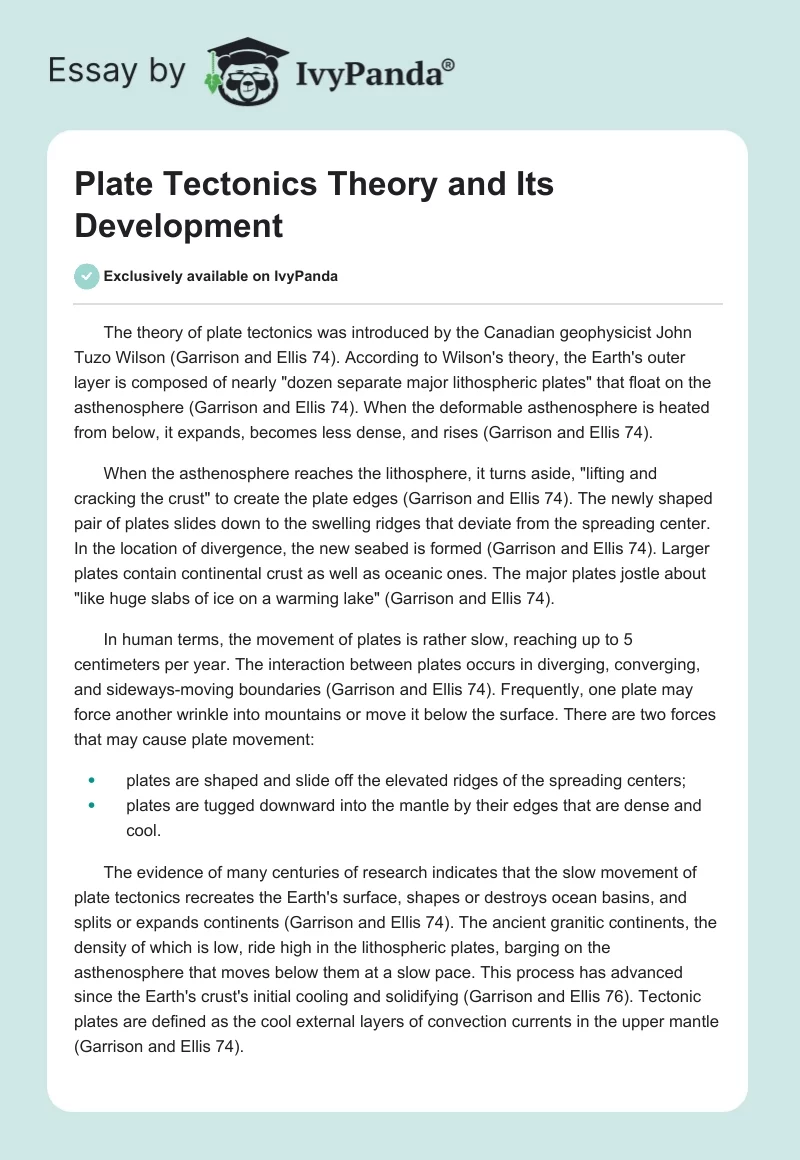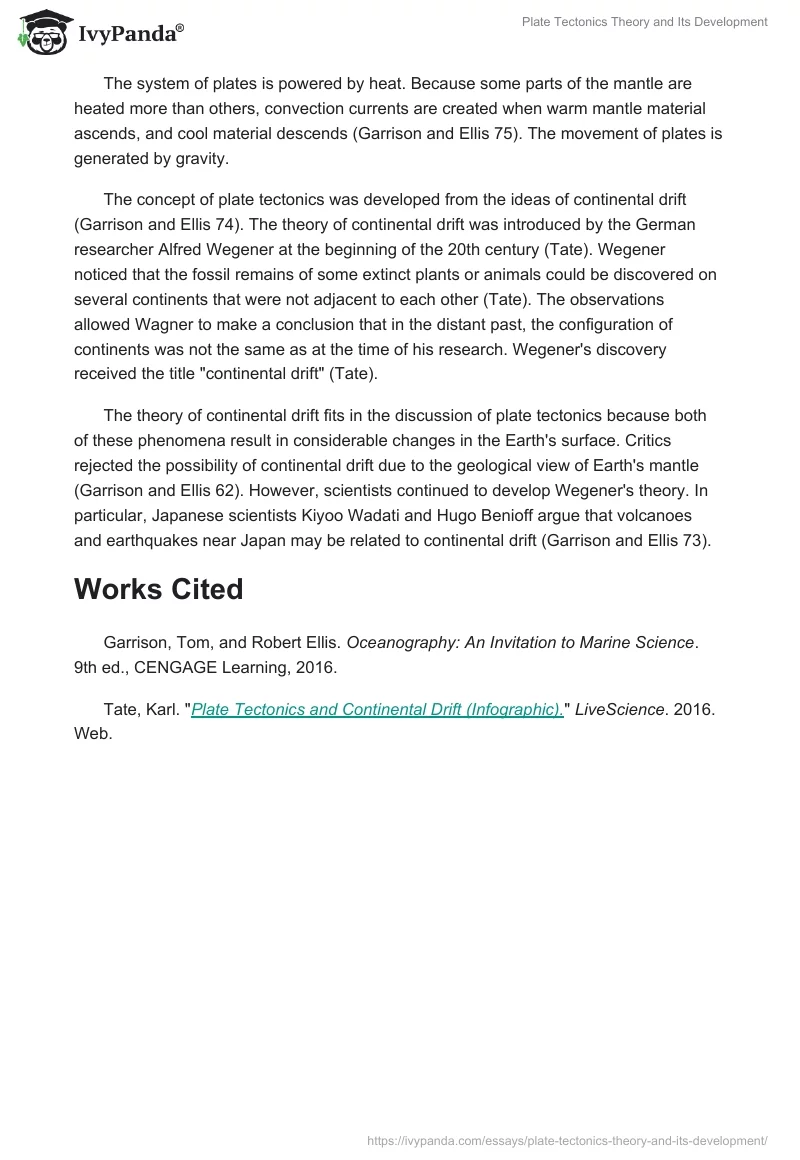The theory of plate tectonics was introduced by the Canadian geophysicist John Tuzo Wilson (Garrison and Ellis 74). According to Wilson’s theory, the Earth’s outer layer is composed of nearly “dozen separate major lithospheric plates” that float on the asthenosphere (Garrison and Ellis 74). When the deformable asthenosphere is heated from below, it expands, becomes less dense, and rises (Garrison and Ellis 74).
When the asthenosphere reaches the lithosphere, it turns aside, “lifting and cracking the crust” to create the plate edges (Garrison and Ellis 74). The newly shaped pair of plates slides down to the swelling ridges that deviate from the spreading center. In the location of divergence, the new seabed is formed (Garrison and Ellis 74). Larger plates contain continental crust as well as oceanic ones. The major plates jostle about “like huge slabs of ice on a warming lake” (Garrison and Ellis 74).
In human terms, the movement of plates is rather slow, reaching up to 5 centimeters per year. The interaction between plates occurs in diverging, converging, and sideways-moving boundaries (Garrison and Ellis 74). Frequently, one plate may force another wrinkle into mountains or move it below the surface. There are two forces that may cause plate movement:
- plates are shaped and slide off the elevated ridges of the spreading centers;
- plates are tugged downward into the mantle by their edges that are dense and cool.
The evidence of many centuries of research indicates that the slow movement of plate tectonics recreates the Earth’s surface, shapes or destroys ocean basins, and splits or expands continents (Garrison and Ellis 74). The ancient granitic continents, the density of which is low, ride high in the lithospheric plates, barging on the asthenosphere that moves below them at a slow pace. This process has advanced since the Earth’s crust’s initial cooling and solidifying (Garrison and Ellis 76). Tectonic plates are defined as the cool external layers of convection currents in the upper mantle (Garrison and Ellis 74).
The system of plates is powered by heat. Because some parts of the mantle are heated more than others, convection currents are created when warm mantle material ascends, and cool material descends (Garrison and Ellis 75). The movement of plates is generated by gravity.
The concept of plate tectonics was developed from the ideas of continental drift (Garrison and Ellis 74). The theory of continental drift was introduced by the German researcher Alfred Wegener at the beginning of the 20th century (Tate). Wegener noticed that the fossil remains of some extinct plants or animals could be discovered on several continents that were not adjacent to each other (Tate). The observations allowed Wagner to make a conclusion that in the distant past, the configuration of continents was not the same as at the time of his research. Wegener’s discovery received the title “continental drift” (Tate).
The theory of continental drift fits in the discussion of plate tectonics because both of these phenomena result in considerable changes in the Earth’s surface. Critics rejected the possibility of continental drift due to the geological view of Earth’s mantle (Garrison and Ellis 62). However, scientists continued to develop Wegener’s theory. In particular, Japanese scientists Kiyoo Wadati and Hugo Benioff argue that volcanoes and earthquakes near Japan may be related to continental drift (Garrison and Ellis 73).
Works Cited
Garrison, Tom, and Robert Ellis. Oceanography: An Invitation to Marine Science. 9th ed., CENGAGE Learning, 2016.
Tate, Karl. “Plate Tectonics and Continental Drift (Infographic).” LiveScience. 2016. Web.


